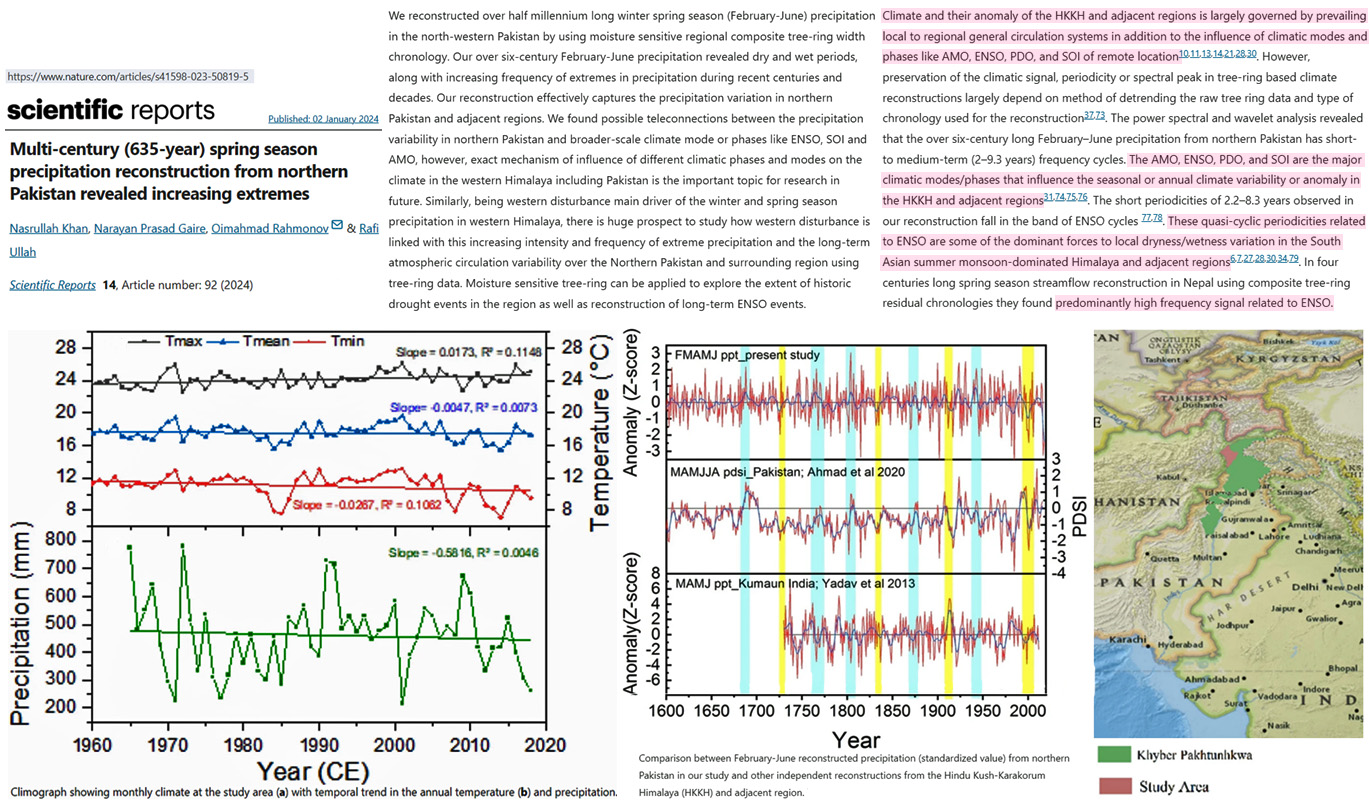A -0.005°C temperature change over a span of 60 years in northern Pakistan (Himalaya region) is ostensibly having “adverse impacts in multiple sectors.”
The first sentence of a new paper’s (Khan et al., 2024) abstract claims:
“Hindu Kush Himalaya region is experiencing rapid climate change with adverse impacts in multiple sectors.”
But in the body of the paper itself the “rapid climate change” is specified as a -0.0047°C mean annual temperature cooling trend from 1960 to 2018.
The title of the paper indicates there have been “increasing extremes” in precipitation in recent decades, but, again, the long-term (635 years) precipitation reconstruction reveals there have been a lack of any obvious wet or dry trends over many centuries.
Even if there were increasing extremes in recent decades, this could not be linked to “climate change” or “global warming” because, as noted, the climate has been slightly cooling in this region. So the “adverse effects” also cannot be linked to anthropogenic global warming either.

Image Source: Khan et al., 2024
The authors also acknowledge that climate change, or wet vs. dry variability, is “largely governed” by natural “dominant forces” like ENSO, PDO, and the AMO.
“Climate and their anomaly of the HKKH and adjacent regions is largely governed by prevailing local to regional general circulation systems in addition to the influence of climatic modes and phases like AMO, ENSO, PDO, and SOI of remote location.”
“The AMO, ENSO, PDO, and SOI are the major climatic modes/phases that influence the seasonal or annual climate variability or anomaly in the HKKH and adjacent regions. The short periodicities of 2.2–8.3 years observed in our reconstruction fall in the band of ENSO cycles. These quasi-cyclic periodicities related to ENSO are some of the dominant forces to local dryness/wetness variation in the South Asian summer monsoon-dominated Himalaya and adjacent regions. In four centuries long spring season streamflow reconstruction in Nepal using composite tree-ring residual chronologies they found predominantly high frequency signal related to ENSO.”





-0.0047°C mean
There are more decimal places than I can handle!
Makes me wonder if the ‘7’ came from rounding up or down,
or are the next few digits all zeros.
Not that I am refuting the numbers, but reporting “no change” seems more appropriate.
[…] Related: New Alarmist Definition Of A Region’s ‘Rapid Climate Change’ Is A Slight Cooling T… […]
[…] New Alarmist Definition Of A Region’s ‘Rapid Climate Change’ Is A Slight Cooling T… […]